
Street peddlers and hawkers were pretty much like the kiosks in the malls today. Some people find them fun and some people are completely irritated by them. Men and women sell their wares, just like they did in earlier centuries, and hope that they make a killing with their products.
Peddlers of yesteryear sold simpler wares than they do today. Some sold freshly roasted peanuts, a treat that is rare today, and some sold household items. Tinware peddlers went from village to village with pots and pans. There were chicken peddlers and opium peddlers. You could get just about anything from the often transient people of the past.
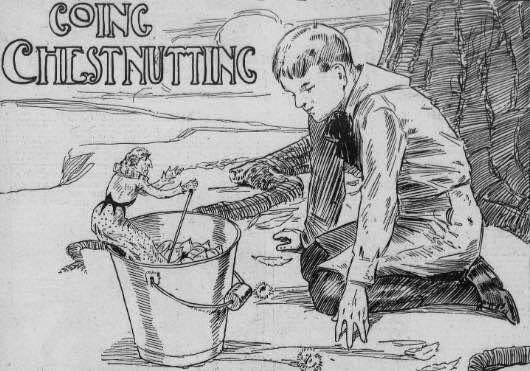
Chestnut Peddler
Chestnut peddlers would sell roasted chestnuts from carts and small stands set up in public areas. It was a popular profession throughout parts of Europe and in the United States. In the media, they were almost always portrayed as good, kindly people.
In 1917, during World War I, a story hit the newspapers about a chestnut peddler and an American soldier. The chestnut peddler, a woman, kept her stand outside the American Field Headquarters in France and every day Private Reamy, a slender, American soldier, would stop by her stand.
Sadly enough, Private Reamy passed away on Thanksgiving day and when the chestnut peddler asked where he was, she was given the news. The woman was devastated. She had already lost her son to the war and her husband was in a hospital, dying from his war wounds.
Two days later, the headquarters received a letter and francs from the chestnut peddler. The letter read, “I desire to place a wreath on the grave of the little American soldier who died far from his own country. I do not ask to be permitted to carry the wreath to his grave. Please, sir, do not refuse the humble offering of a poor French woman who loves America – who loves the memory of this dear, dear boy, who died far from his own mother, while assisting France. Do not refuse to place my wreath for this poor little soldier.”
The money was used for the wreath and soldiers carried it in procession to his grave. [SOURCE 1]
Fakers
Fakers worked predominantly in the circus scene during the early 1900s. They would travel around from city to town to city again, seeking out suckers with a bit of cash.
Common fakers would set up a stand and play the three shell game or the three card game with anyone who was willing to place a bet, and they made a killing in their trade. An article from 1910 stated that the circus fakers could pull in five thousand dollars a night altogether.
Other fake gambling games played were beehive, Klondike, tobacco box, the envelope game, and the dial. All of these games were created so that the player could not win unless the faker allowed him to. That is where the “capper” came in. This guy would walk up to the table and win big, drawing in a crowd of other people looking to make easy money. [SOURCE 2]
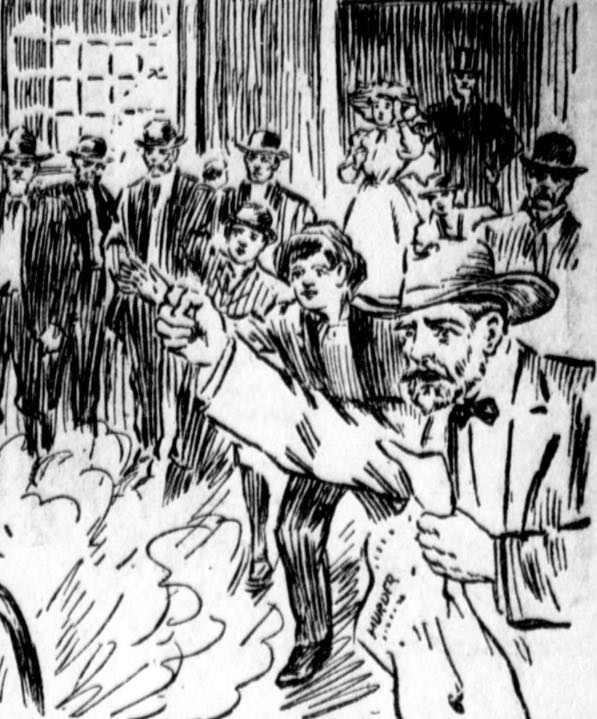
Hot Tamale Man
Tamales are a Latin American and Southern U.S. food containing seasoned meat wrapped in corn husks, and they were as popular in the early 1900s as they are today.
A newspaper report from 1911 stated that, “It’s a sure sign of winter when the hot tamale man begins to get busy and ply his trade on the city streets…” The tamale man would cart around his portable fire on cold nights, serving up tamales and chicken to warm the bellies of customers.
Of course, since there was little to no oversight for the preparation of the meat, there were a number of reports of food poisoning, such as in 1906 when a man stopped to get a tamale and was later taken to the hospital for ptomaine poisoning. [SOURCES 3, 4]
Candy Peddler
There was a time when men would drive carts from street to street and town to town, selling assorted candies to the crowds. Unlike the chestnut peddlers, the candy peddlers were often portrayed in a negative light in the newspapers.
In 1906, there were a few lines in a Los Angeles paper that a candy peddler had been arrested. He was charged with “obstructing the sidewalk.” Another time, in New York City, a nineteen-year-old candy peddler was selling his candy along Wall Street when four policemen and a health inspector descended upon him. The young man was fined $18 dollars for not keeping the candy covered.
There was a pretty good reason for going after peddlers for not keeping the candy covered up. In 1916, there was a report that a candy peddler had passed away due to tuberculosis. Tuberculosis is a highly contagious, airborne disease and this candy peddler was selling his candy while he was sick. [SOURCES 5, 6, 7]
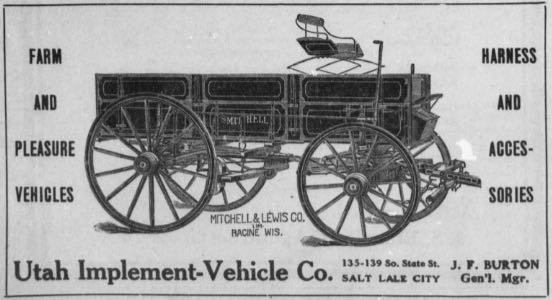
Fruit Huckster
Fruit hucksters would travel with a cart of fruit to sell. Sometimes it would just be one type of fruit, such as coconuts, and other times the huckster would sell whatever he could get from a local farm.
In 1902, there was printed an inspiring story about a man who fled Russia, traveled through Europe, and eventually landed in the United States. By the time he reached Kansas City, he had no money and was near starvation.
A group of Jewish people helped him buy some fruit and he walked the streets, selling his produce. At night he went to the library and studied the English language.
This went on until the Superintendent of Public Schools took notice of him and discovered that the young man knew multiple languages, including Latin and Greek. He was given a teaching position in a public school and eventually became a professor. Professor Leo Weiner eventually headed the Chair of Slavonic at Harvard University and published the “History of Jargon Literature.” [SOURCE 8]
Fishmonger
The men who sold fish along the streets were always getting into trouble, especially in Australia where fishmongers were getting fined for selling fish during prohibited months and for their less than sanitary condition.
One particular fishmonger was fined after a health inspector noticed a “putrid matter flowing down an open channel.” He followed it back to the source and discovered flies and fish that had gone bad in 105 degree weather.
In another case, a Brisbane fishmonger was caught trying to sell week old fish that was not fit for human consumption. The fishmonger could either pay a fine or endure two months of hard labor. [SOURCES 9, 10, 11]

Shoe String Peddler
The men who went about selling shoe strings seemed to be the thriftiest of the peddlers. There are numerous stories about shoe string peddlers having wads of cash on hand.
In one case, reported in 1929, a shoe string peddler passed away. To the amazement of his friends, it was discovered that he had managed to put away roughly fifty thousand dollars.
How did he do that? His shoe strings sold for a little under fifty cents and his customers told him to keep the change. He saved that extra money plus whatever else he could from his profits and invested it. Out of mere pennies and perseverance, the man built up a healthy nest egg. [SOURCE 12]
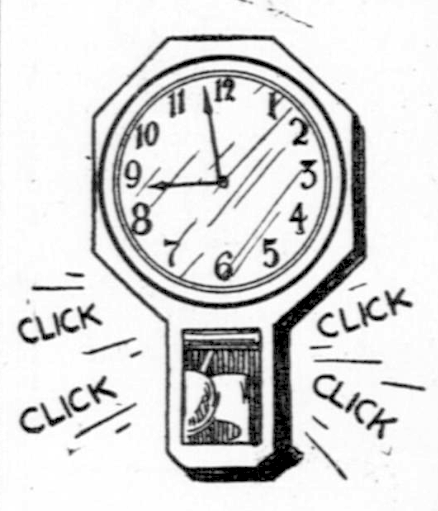
Clock Hawker
If antique clocks make you think of Germany, you are on the right path. The Black Forest had its very own wandering clockmaker, as reported in 1938.
The aging clockmaker, affectionately called Father Time, would hike to the villages, carrying his clocks on his back. He sold new and used clocks, accepted trade-ins, and would fix broken clocks.
Four times a year he would return home to his family where he would stock up on fresh supplies. His wife and his children worked on repairing clocks while he was away.
When he was on the road, “tourists [were] surprised and amused when they [saw] the walking clock shop, but the natives know him by sight and don’t bat an eye. Many of them put him up for the night or make him a hot meal in exchange for repairing grandfather’s clock in the hallway or for one of the make believe dime watches which he keeps in his pockets to give the shy youngsters at the homes of his customers.” [SOURCE 13]
Pencil Peddler
The boys and men who went about selling pencils were an interesting lot and there are numerous stories about them.
In an article from 1922 we find a blind man selling pencils in downtown Detroit. A millionaire heard about it and decided to help the man out. He brought in a specialist and had him examine the blind peddler’s eyes.
The specialist said that he could cure the man’s blindness with an expensive operation and the millionaire said he would pay to have it done, but the peddler said no. “I want to be blind. If I got my sight back I’d have to go back to hard work… I’m happy this way. I make a lot of money through my blindness.”
The millionaire was angry at this response and, out of spite, prevented the blind man from getting his peddling license renewed.
Several years before this incident, a different pencil peddler died in a San Francisco hospital. He was autopsied and in his stomach they found a metal handled knife, a piece of wood wrapped with rawhide, an unsharpened pencil, and other assorted objects. He had been admitted to the hospital when he complained of leg pain (he only had one) and the doctors did not know that the man suffered from pica. [SOURCES 14, 15]
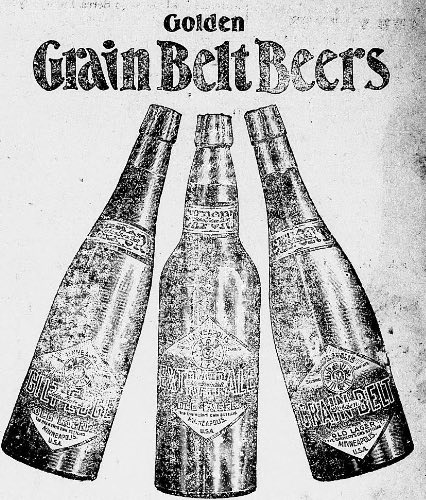
Sly Grogging
During the prohibition in Australia, men started sly-grog selling, and it was becoming a huge problem.
Basically, a man would stand in a lane and would wait until a customer handed him some money before pulling out a bottle of beer from his pocket. Lookouts were set up on either side of the lane in case the police would come by. Raising a hat was usually the signal that trouble was on the way and the sly grogger would duck and hide.
Beer gangs were becoming more and more organized and in 1919, Brisbane officials were beginning to realize that the fines were not stopping anyone from selling or drinking beer. [SOURCE 16]

